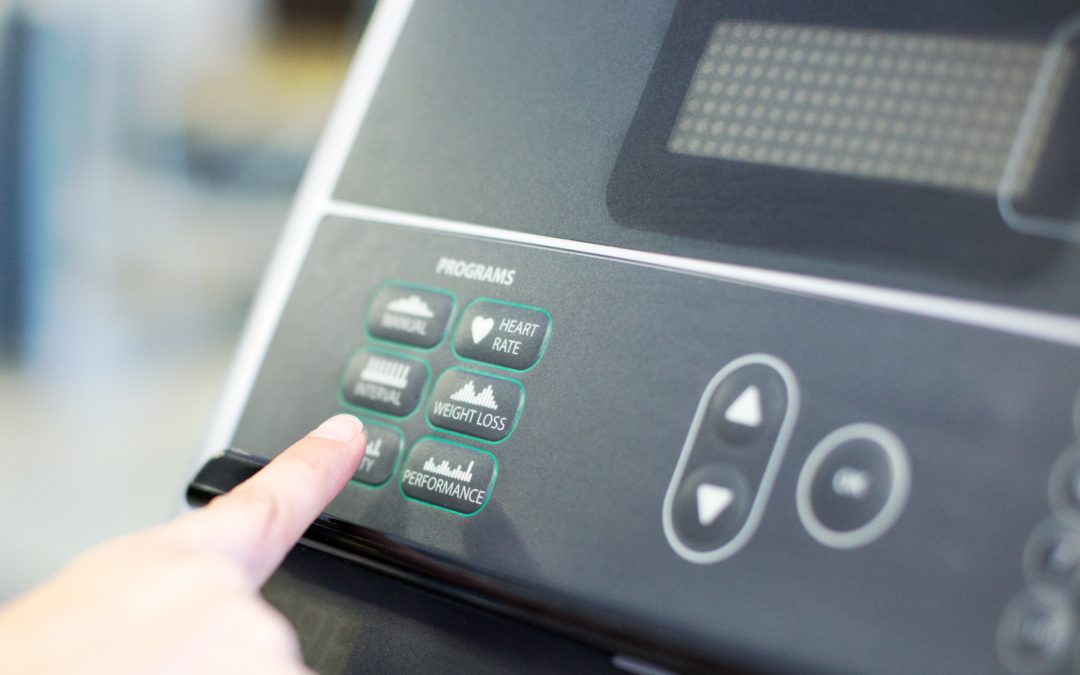Walking or jogging on a treadmill may seem safe, and for the most part it is. But because accidents do happen, particularly when using gym equipment, it’s important to be reminded of the risks of this sort of exercise.
A treadmill is powered by a motor, rather than being self-propelled, so mishaps can happen — especially when folks lose their balance. The results can include bruises, sprains, broken bones, concussions, and sometimes even death.
Even though the Consumer Products Safety Commission reported more than 24,000 emergency room visits associated with treadmills in the United States at 2014, deaths are, fortunately, rare. That said, it’s vital for people to understand their physical limitations and keep safety in mind when using a treadmill.
On those days when you can’t walk or run outside because of heat, cold, or rain, treadmill exercise can offer the same benefits with the added plus of being able to include hill-specific workouts and pacing strategies.
Treadmill Training and Safety Tips
Exercise can help you lose weight, make your bones and muscles stronger, relieve depression and stress, and decrease your risk for diabetes, arthritis, heart disease, higher cholesterol, high blood pressure, and colon cancer. Using a treadmill is a great way to keep up your exercise regimen when other factors are inhibiting your outdoor routine.
The following 10 tips can help keep you safe and maximize your treadmill workout:
Make Certain You Know Your Health Status
Sometimes a fall on a treadmill is caused by a cardiovascular episode (CVI), like a heart attack or a stroke. CVI affects males over the age of 55 with higher anxiety levels, among other risk factors. Make certain that you have a clean bill of health before starting an exercise program.
Recognize the Signs of Trouble During Your Fitness
If you feel chest pain, shortness of breath, or light-headedness, stop your workout. These are warning signs that there may be an underlying health condition that you should discuss with your physician.
Become Familiar With the Safety Mechanism
This is often a clip that can be attached to a user’s clothing. If you trip and fall or lose your balance, the key will pull away from the machine, shutting down the treadmill.
Maintain Distractions, Like TV and Music, to a Minimum
Exercising on a treadmill while watching TV or reading could be too distracting and might increase your chance of injury from a fall. Start your exercise at a slower pace, be aware of the width of the treadmill belt, so ditch the headphones until you find your rhythm, and keep the volume low.
Have a Plan in Place Before You Start to Exercise
If your treadmill isn’t at a professionally staffed health club, let someone know that you are about to get a work out in. Keep a phone nearby in case of an emergency, or work out with a friend.
Wear the Correct Gear When Working Out
Avoid clothing that could snag in the belt of the treadmill, and make sure you wear great athletic footwear. And not wear sandals or flips-flops or run barefoot on a treadmill.
Straddle the Deck Before Turning On the Treadmill
Avoid starting the treadmill whilst standing on the belt. The motion might catch you by surprise and knock you off balance, sending you flying. Get in the habit of straddling the deck and allowing the belt to start moving before stepping on it. And when you are finished with your workout, always stop the machine before getting off.
Maintain the Right Form on the Treadmill
Keep decent posture, which means that your shoulders must be back, and your head facing forward, not looking down at the floor. Relax your hands and let your arms swing naturally. Keep the same length of stride as you want outdoors. Don’t let your strides get short and choppy.
Pay Attention to Where You Are on the Machine
Don’t drift to one side on the belt. Know your limitations; when you feel fatigued or lose proper form, it’s time to stop before you get hurt.
Increase Time First, Then Intensity, to Avoid Injury
Whenever you are starting your treadmill program, gradually add time to your work out first. You can increase intensity later by adding speed or increasing the incline of your treadmill. Experts also recommend increasing either speed or strength, but not both at the same moment.

